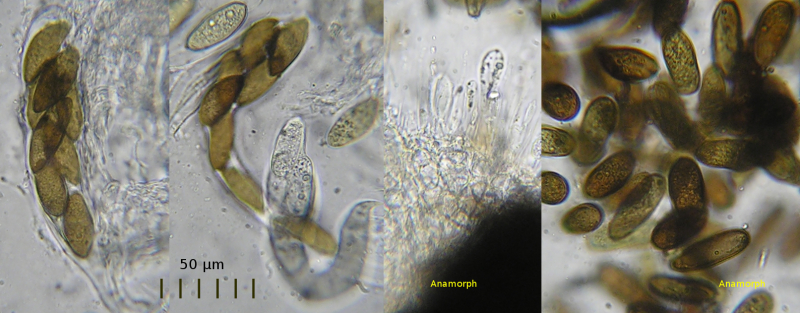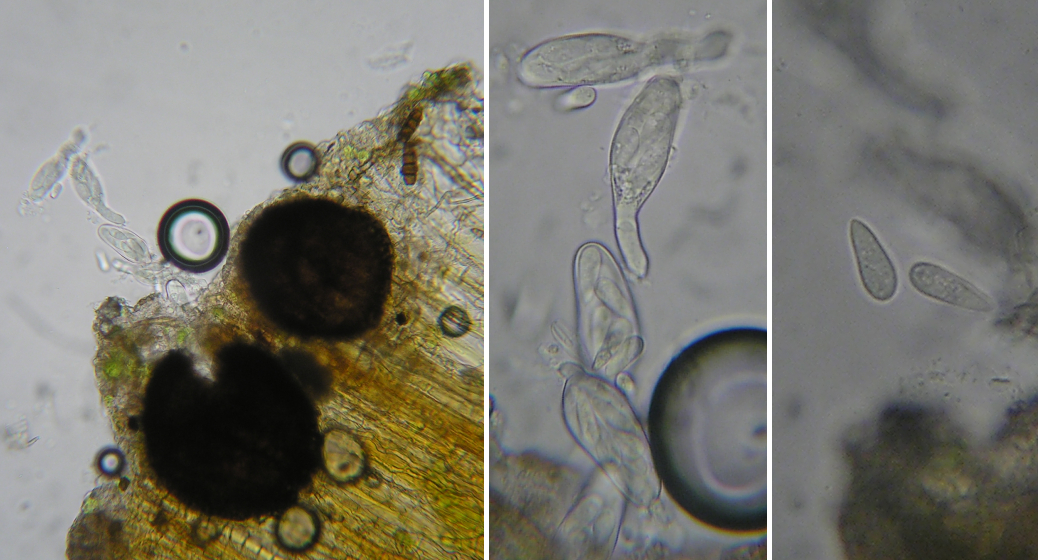Home >> Diversity and classification >> True fungi >> Dikarya >> Ascomycota >> Pyrenomycetes >> Dothideomycetes >> Botryosphaeriales
THE BOTRYOSPHAERIALES
The Botryosphaeriales most commonly occur on woody plants where they may be parasitic, saprotrophic or endophytic. They produce their asci in dark ascomata that may occur singly or united in stromatic crusts. As with other Dothideomycetes, the asci are bitunicate, although the double wall may not be visible in fully mature material. The ascospores are always one-celled, a feature separating them from most other Dothideomycetes.
The order is thought to contain only one family, the Botryosphaeriaceae, and about 25 genera. Best known are Botryosphaeria and Guignardia, two genera separable mainly by the presence of gelatinous caps or appendages on the ascospores of Guignardia species and their absence on ascospores of Botryosphaeria.

The set of pictures above shows Botryosphaeria laricis, a species found on small branches of larch. Ascospores of Botryosphaeria are normally colourless while these are distinctly brown, suggesting that it might be more correctly placed in Phaeobotryosphaeria. The two left panels show the asci and large one-celled ascospores. The right two panels illustrate the anamorph, characterized by large single-celled conidia remarkably similar to the ascospores.

The next set of pictures shows a species of Botryosphaeria commonly found on living branches of balsam fir. We have so far been unable to identify its species, in spite of the fact that it seems to be common from Ontario to New Brunswick. Unlike B. laricis, this species has ascospores and conidia that appear to remain colourless. On the other hand, it resembles B. laricis in having single-celled conidia, a feature less commonly in the Botryosphaeriaceae. Many species in this family have anamorphs referrable to Diplodia.